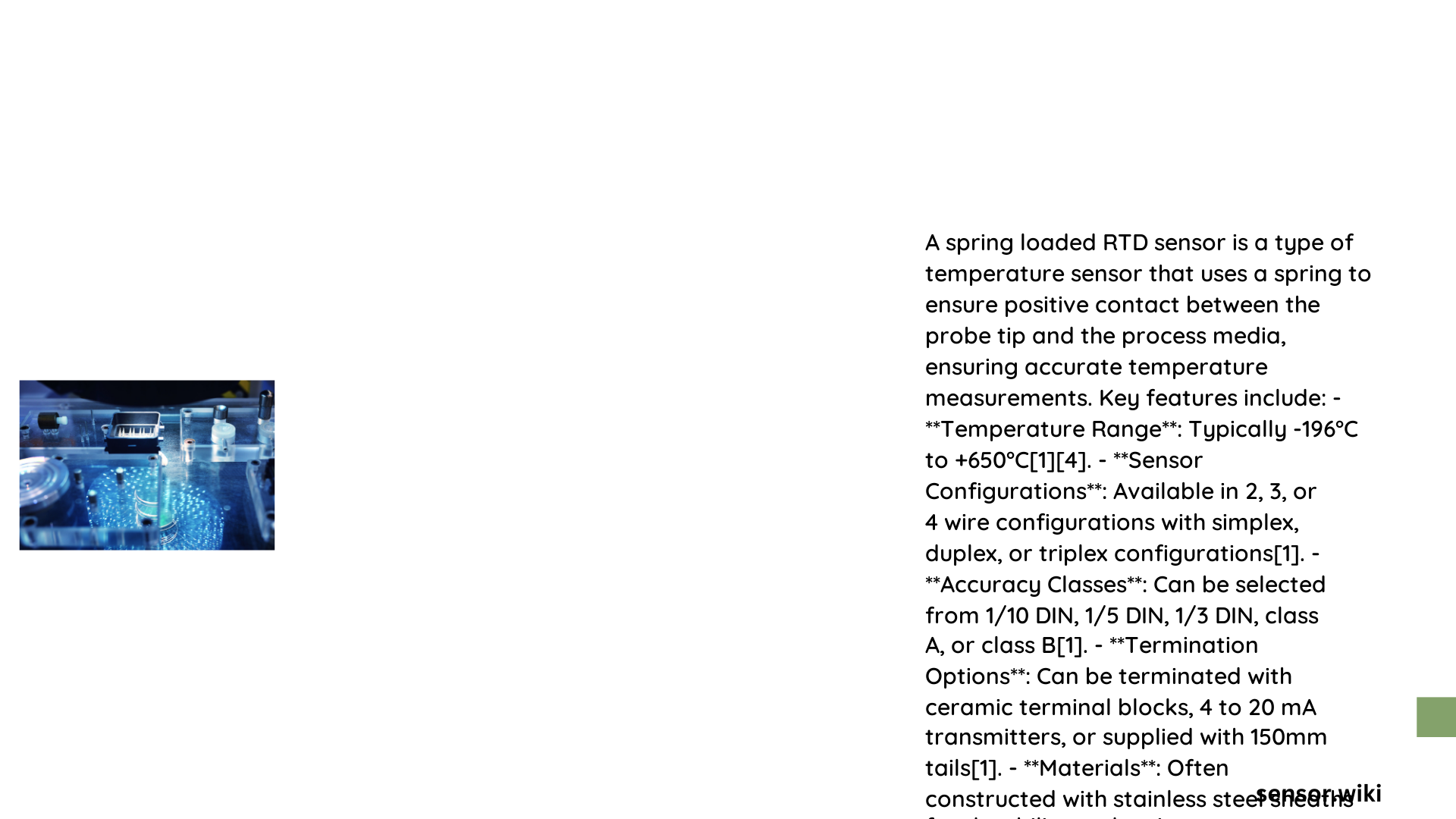Spring loaded RTD sensors represent a sophisticated temperature measurement technology designed to provide accurate and reliable temperature readings in challenging industrial environments. These specialized sensors utilize a platinum resistance temperature detector (RTD) element mounted within a spring-loaded mechanism, enabling precise thermal contact and enhanced measurement performance across diverse applications ranging from HVAC systems to chemical manufacturing processes.
What Are Spring Loaded RTD Sensors?
Spring loaded RTD sensors are advanced temperature measurement devices that combine precision engineering with robust mechanical design. The unique spring-loading mechanism ensures consistent thermal contact between the sensor element and the measurement surface, minimizing measurement uncertainties.
Key Components of Spring Loaded RTD Sensors
| Component | Function | Material |
|---|---|---|
| Platinum RTD Element | Temperature Detection | Pure Platinum |
| Spring Mechanism | Thermal Contact Pressure | Stainless Steel |
| Protective Sheath | Environmental Protection | 316 Stainless Steel |
What Makes Spring Loaded RTD Sensors Unique?

Precision Temperature Measurement
Spring loaded RTD sensors offer exceptional accuracy across multiple temperature ranges:
– Temperature Range: -196°C to +650°C
– Accuracy Classes:
– Class A
– Class B
– 1/10 DIN
– 1/5 DIN
Mechanical Advantages
The spring-loaded design provides several critical advantages:
– Consistent thermal contact
– Reduced measurement errors
– Enhanced mechanical durability
– Minimal installation complexity
Where Are Spring Loaded RTD Sensors Applied?
Industrial Applications
- HVAC Systems
- Precise temperature monitoring
-
Energy efficiency optimization
-
Chemical Manufacturing
- Harsh environment temperature tracking
-
Process control and safety
-
Food Processing
- Compliance with safety standards
- Accurate temperature measurement
How Do Spring Loaded RTD Sensors Work?
The operational principle involves a platinum resistance element mounted within a spring-loaded mechanism. When inserted into a thermowell or measurement point, the spring applies consistent pressure, ensuring optimal thermal transfer and minimizing measurement variations.
Technical Specifications
- Resistance Values: Typically 100 ohm (Pt100)
- Response Time: 5-30 seconds
- Environmental Protection: NEMA 4X, IP66 rating
What Are the Benefits?
Performance Advantages
- High accuracy (±0.1°C to ±1°C)
- Wide temperature measurement range
- Robust mechanical design
- Low maintenance requirements
Cost-Effectiveness
- Long operational lifespan
- Minimal replacement frequency
- Reduced system downtime
Installation Considerations
Mounting Requirements
- Use appropriate thermowell
- Follow manufacturer torque specifications
- Ensure proper alignment
- Select correct probe length
Maintenance Best Practices
- Regular calibration
- Inspect spring mechanism
- Check electrical connections
- Verify protective sheath integrity
Selecting the Right Spring Loaded RTD Sensor
Evaluation Criteria
- Temperature range
- Accuracy requirements
- Environmental conditions
- Installation constraints
Future of Temperature Sensing Technology
Spring loaded RTD sensors continue evolving, incorporating advanced materials and digital integration for more sophisticated temperature measurement solutions.
References:
– Ultra Energy 612 RTD Sensor
– HBSensors RTD160
– AutomationDirect RTD Probes
